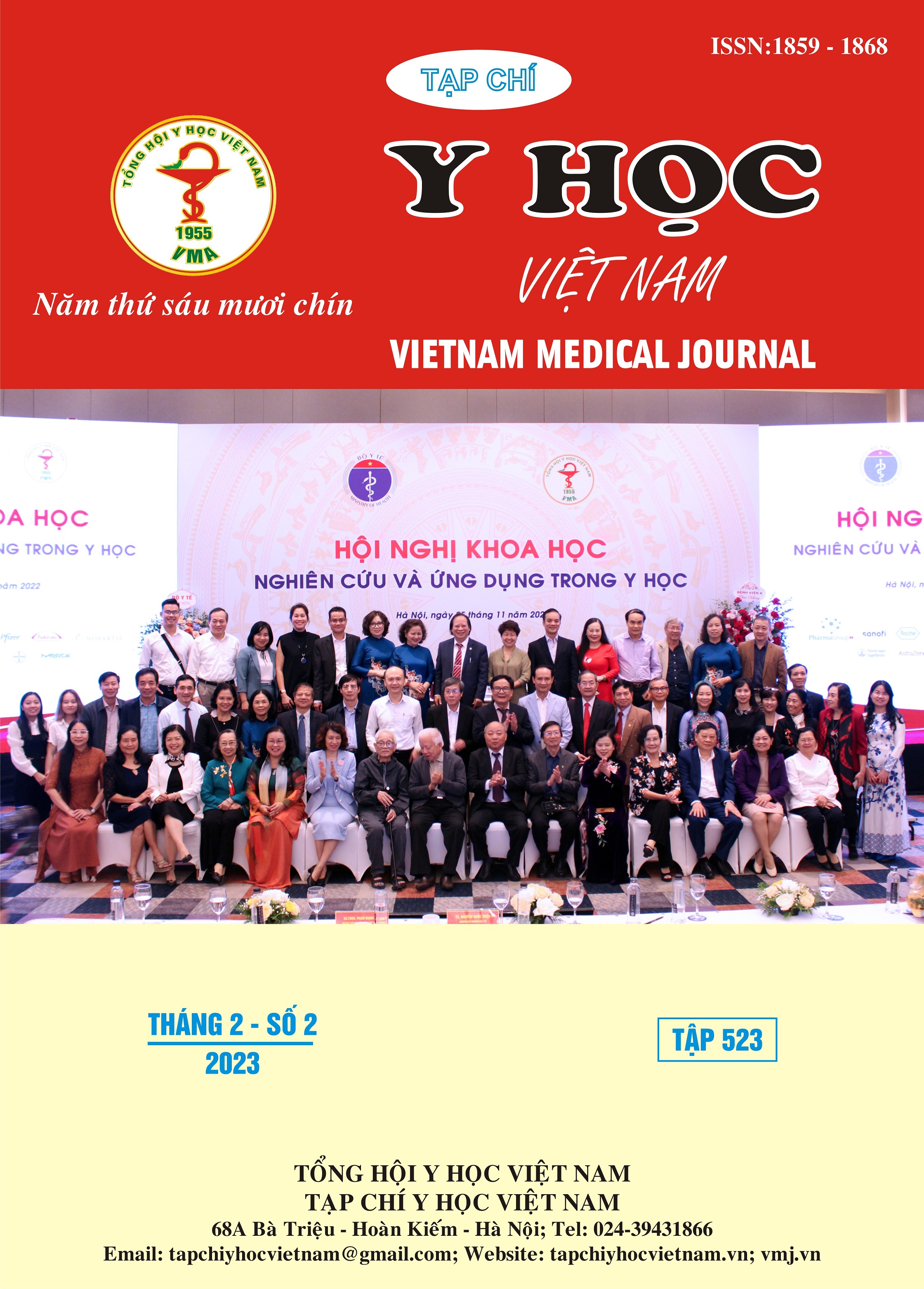KẾT QUẢ ĐIỀU TRỊ CHẢY MÁU DƯỚI MÀNG NHỆN BIỆT LẬP DO CHẤN THƯƠNG SỌ NÃO NHẸ TẠI BỆNH VIỆN ĐA KHOA TỈNH THÁI BÌNH
Nội dung chính của bài viết
Tóm tắt
Mục tiêu: Nhận xét kết quả điều trị chảy máu dưới màng nhện biệt lập do chấn thương sọ não nhẹ. Phương pháp: Mô tả cắt ngang 75 bệnh nhân chảy máu dưới màng nhện biệt lập do chấn thương sọ não nhẹ được điều trị tại khoa Phẫu thuật Thần kinh – Cột sống Bệnh viện Đa khoa tỉnh Thái Bình. Kết quả: 75 bệnh nhân gồm 53 nam, 22 nữ, Tỉ lệ nam/nữ là 2,4 lần. Nguyên nhân gặp nhiều nhất do tai nạn giao thông 72%. Thời điểm từ lúc bị tai nạn đến khi nhập viện trước 6 giờ chiếm 90,7%. Tình trạng tri giác khi nhập viện Glasgow Coma Scale (GCS) 15 điểm chiếm 90,7%, GCS 14 điểm chiếm 5,3%. GCS 13 điểm chiếm 4,0%. Phân độ chảy máu dưới màng nhện trên cắt lớp vi tính theo Fisher độ II và độ III chiếm lần lượt là 94,7% và 5,3%. Thời gian điều trị từ 7-14 ngày là cao nhất 66,7%, tiếp theo là <7 ngày chiếm 20%. Kết quả điều trị nội khoa khi ra viện 75 bệnh ổn định, không có biến chứng cần can thiệp phẫu thuật. Kết luận: Chảy máu dưới màng nhện biệt lập do chấn thương sọ não nhẹ và lượng máu trên cắt lớp vi tính theo Fisher độ 2 thì điều trị nội khoa cho kết quả ổn định, không có biến chứng nặng thêm và không có can thiệp phẫu thuật.
Chi tiết bài viết
Từ khóa
Chảy máu dưới màng nhện biệt lập, chấn thương sọ não nhẹ
Tài liệu tham khảo
2. Farshad Nassiri , Jetan H Badhiwala (2017), The clinical significance of isolated traumatic subarachnoid hemorrhage in mild traumatic brain injury: A meta-analysis. J Trauma Acute Care Surg. 2017 Oct;83(4):725-731.
3. Wellingson S Paiva, Almir Ferreira de Andrade (2010), The prognosis of the traumatic subarachnoid hemorrhage: a prospective report of 121 patients. Int Surg. 2010 Apr-Jun;95(2):172-6.
4. A Stewart Levy , Alessandro Orlando (2011), Should the management of isolated traumatic subarachnoid hemorrhage differ from concussion in the setting of mild traumatic brain injury?. J Trauma. 2011 Nov;71(5):1199-204.
5. Eric D Forney, Anne Montgomery (2022), Do All Isolated Traumatic Subarachnoid Hemorrhages Need to Be Transferred to a Level 1 Trauma Center?.AmSurg.2022Aug;88(8):1827-1831.


